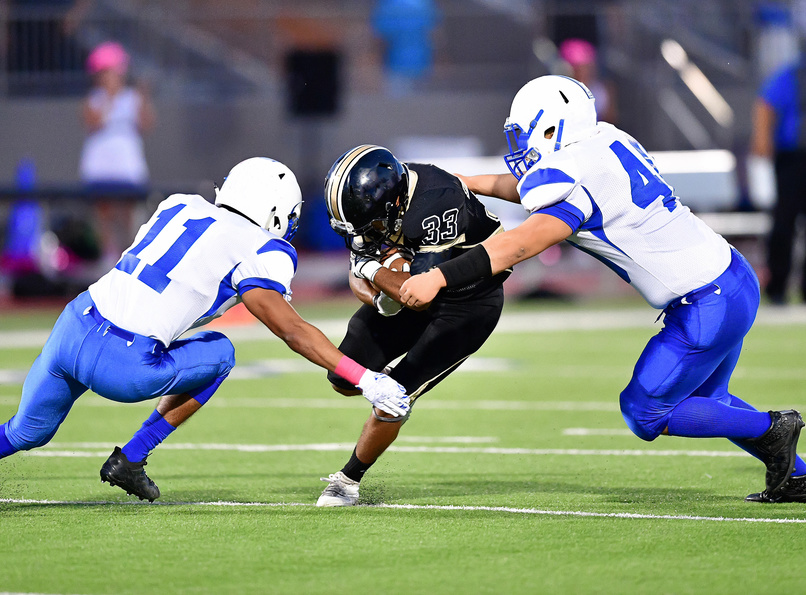I absolutely love this time of year. The leaves are changing colors, the weather is getting a bit cooler, and – my favorite part – it is peak sports season. At the professional level baseball has entered the post-season, football is well underway in their regular season, hockey season started this week, and basketball season will tip off later this month. It certainly feels like there is never a shortage of sports to watch this time of the year.
There also seems to be no shortage of sports to participate in this time of year. High school athletics are in full swing, including sports like football, soccer, volleyball, and cross country. Many adult leagues are available this time of year as well: softball, volleyball, hockey, and flag football.
Unfortunately, along with this rise in sports participation can come a rise in musculoskeletal injury. One of the more significant fall sports injuries we see is a tear to the anterior cruciate ligament, otherwise referred to as the ACL.
ACL injuries are often from non-traumatic causes.
This injury gets a lot of publicity due to its frequency in the National Football League, particularly in preseason training camps, and the contact nature of the sport. But the truth is that an ACL injury occurs most often from a non-traumatic cause. Available research estimates that non-traumatic mechanisms of injury account for approximately 70% of all tears to the ACL, as opposed to those involving contact! Therefore, this injury affects participants across all kinds of sports.
A non-contact ACL tear will generally occur when the knee buckles inwardly, into what physical therapists will call a valgus position, while the foot is firmly planted. This can occur with landing from a jump, or with rapid changes in direction. Some patients will report hearing a “pop” in the knee when the injury occurs, and they may also report a feeling of instability at the knee.
You shouldn’t wait until after surgery to start rehab.
Did you know that, in the event of a torn ACL, rehabilitation doesn’t have to wait until after surgical repair to begin? This is a concept called pre-rehabilitation, otherwise known as “Prehab.” Traditionally patients report to physical therapy services after they have received surgery to repair their torn ACL. However, with prehab, patients report to physical therapy services for a period of time prior to undergoing their procedure. Prehab exercises focus on building muscle strength in the hips and quadriceps appropriately, while also maintaining the available range of motion at the joints of the lower extremity. Prehab may also include training in the use of assistive devices such as crutches, both on level ground and up/down curbs and stairs. The available research supports the use of prehab within a plan of care. One study reported that patients who participated in a prehab exercise program as they awaited ACL repair had improved knee function which was sustained at 12 weeks post-operatively.
Physical therapy is also key to the rehabilitative effort post-surgery. Therapists are able to assist you with regaining motion at the knee joint, improving the function of the quadriceps musculature, and normalizing a patient’s gait pattern to name only a few interventions.
Physical therapy can help with preventing injury in the first place!
Maybe you haven’t experienced an ACL tear, but you would really like to prevent one. Physical therapy can help tremendously with that, too. Therapists are capable of conducting a pre-activity assessment. We assess range of motion, strength, and body mechanics amongst other factors to evaluate if you might be at a greater risk of an ACL with competitive sports participation. We can then provide you with a personalized home exercise program to improve any relevant impairments.
If you are having knee pain, perhaps after participation in recreational or competitive athletic activity, make an appointment with a physical therapist at one of our 4 clinic locations today. Our skilled therapists would be happy to give your knee a comprehensive evaluation!
References:
Boden, Barry P., et al. “Mechanisms of anterior cruciate ligament injury.” Orthopedics 23.6 (2000): 573-578.
Shaarani, Shahril R., et al. “Effect of prehabilitation on the outcome of anterior cruciate ligament reconstruction.” The American journal of sports medicine 41.9 (2013): 2117-2127.

